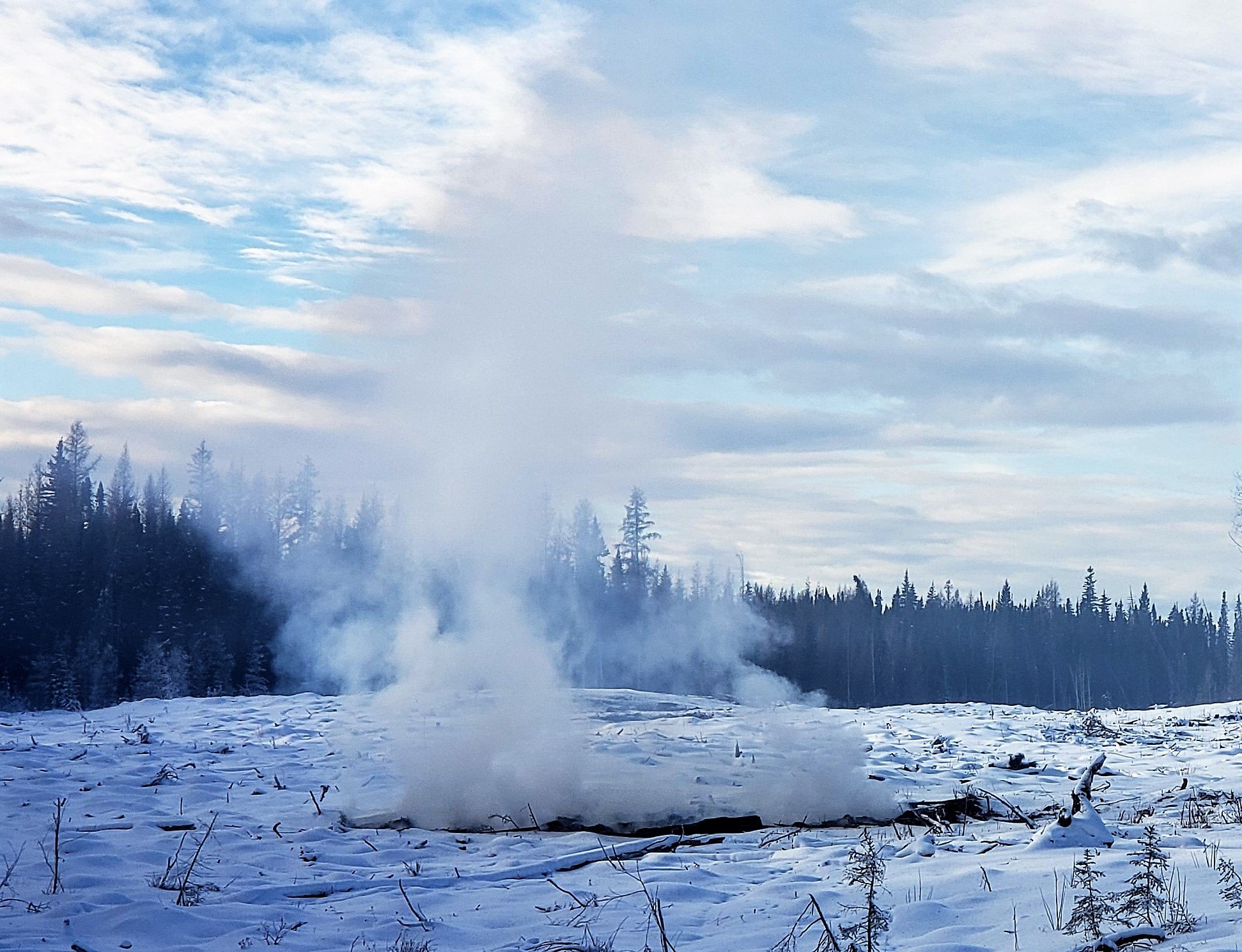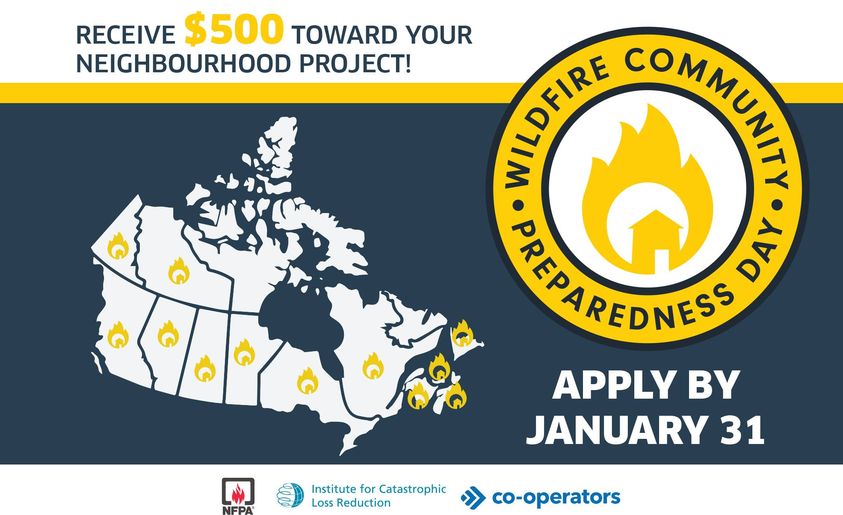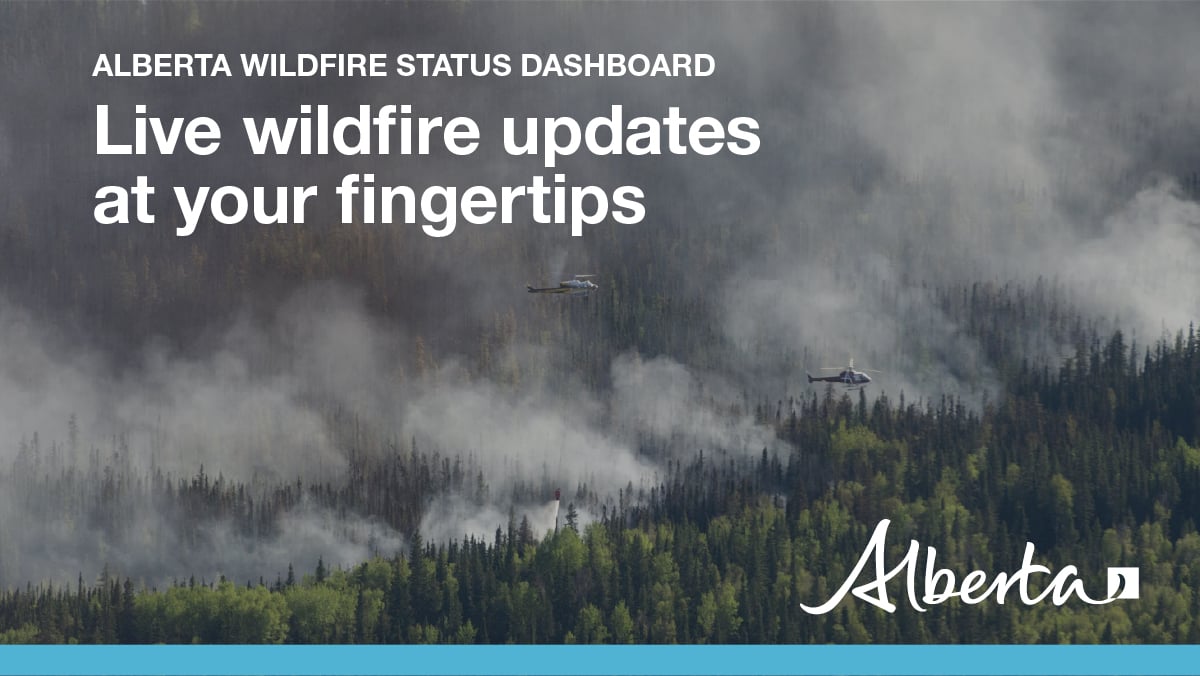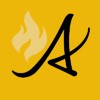
.jpg?width=3307&height=4279&name=Seasonal-employment-8.5X11-poster%20(002).jpg)
If fires aren’t properly put out, they can spread and burn underground, under the snow and ice, all winter. Under the right conditions, these fires can re-emerge in the spring as wildfires. Do your part to prevent spring wildfires by revisiting your winter burns to make sure there are extinguished.
Firefighters do respond to wildfires, even in the winter. If you spot a wildfire report it by calling 310-FIRE(3743).

Take the time to properly prepare your burn site. Know the requirements needed to be successful during your burn and how to properly extinguish your site.
Before You Burn
- Winter burns should be conducted in areas with sufficient snow cover of more than 15 centimetres and burns must be monitored the entire time.
- Ensure smoke warning signs are in place before burning within half a mile (800 m) from a roadway. For more information on smoke management and to acquire signs, contact your local municipality. If you are outside of a municipality, contact Alberta Transportation.
- Read over the Recommended Practices for placement and instruction of a “Smoke Ahead” sign.
While burning:
- Have someone monitoring the burn the entire time – if it escapes, immediately report it to 310-FIRE.
- Only burn what you can control with the equipment and people you have available, and adjust your burning according to weather conditions.
- Build it right. Brush piles or debris windrows should be free of soil, built to a maximum height of 3 metres, and with a fireguard or cleared land around it to stop the spread of fire.
After you burn:
- Spread remaining material within the pile and soak with water as required.
- Check the area and ensure both heat and smoke are no longer being produced by the pile – it should be cool to the touch.
- Check your burn site multiple times in the following weeks to ensure it has not reignited.
Smoke Safety
The lower fire hazard in winter is a safer time to consider doing your burns. There are still some necessary precautions to take before burning, like monitoring the weather to ensure smoke from your burn won’t negatively impact surrounding areas.
For information on ventilation conditions within the province, visit Environment Canada’s Ventilation Index.
On particularly cold winter days, inversions and other weather factors can cause smoke from a winter burn to stay close to the ground and travel great distances. An inversion happens when cold air is trapped near the ground by a layer of warmer air above it. Inversions can cause dangerous driving conditions and impact nearby communities.
When burning in winter:
- Refrain from burning when an inversion is in place or is forecasted.
- Consult local municipalities and authorities on how to mitigate impacts when undertaking larger winter burning projects near communities or road ways.
- Actively manage burn projects to reduce disposal time and smoke impacts.
- Burning debris in stages will allow you to adapt to changing weather conditions and reduce smoke.
- Monitor weather conditions: lower temperatures and lighter wind speeds can result in stronger inversions. The ideal conditions for burning are typically days with average temperatures and wind speeds over 5 km/h.
- Ensure good snow cover in the burn area (more than 15 cm).
Safe burning practices are always in season – don’t let your winter burn come back to life in the spring.

FireSmart
Want to reduce your risk against wildfire? Apply today for a $500 #WildfirePrepDay award to help #FireSmart your neighbourhood! Find ideas and applications by visiting https://firesmartcanada.ca/programs/wildfire-community-preparedness-day/

Wildfire Information
The new wildfire dashboard provides up-to-date wildfire information at the click of a button. This interactive tool displays important statistics on the number of active wildfires in the province, sizes, locations, suspected causes and more. The dashboard builds on the former wildfire status map by displaying the most frequently accessed information in one convenient location.
Download the Alberta Wildfire app today and get access to accurate, real-time information on wildfires in your area. You can also find information on fire advisories, restrictions and bans across the province and much more all on your mobile device.
Available for Apple and Android.
Subscribe to the Slave Lake Forest Area Wildfire Update to receive an email when new information is posted.
Join the conversation on Facebook, Twitter or Instagram.Unless conditions change you can expect your next wildfire update on February 13th.
If you have any questions please contact:
Leah Lovequist
Wildfire Information Officer
Mobile:780-849-0945
Email: leah.lovequist@gov.ab.ca
RELATED INFORMATION
Websites:
